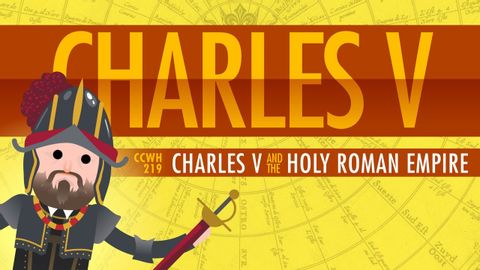
Subtitles & vocabulary
Charles V and the Holy Roman Empire: Crash Course World History #219
00
Jack posted on 2015/07/29Save
Video vocabulary
world
US /wɜrld /
・
UK /wɜ:ld/
- Noun (Countable/Uncountable)
- All the humans, events, activities on the earth
- Political division due to some kind of similarity
A1
More claim
US /klem/
・
UK /kleɪm/
- Noun (Countable/Uncountable)
- To say that something is true, often without proof.
- A statement that something is true.
- Transitive Verb
- To demand or ask for something that you believe is rightfully yours.
- To take or cause the loss of (e.g., a life, property).
A2
More failure
US /'feɪljər/
・
UK /ˈfeɪljə(r)/
- Noun
- When things go wrong; lack of function
- Act or result of not achieving your goals
A1TOEIC
More fight
US /faɪt/
・
UK /faɪt/
- Verb (Transitive/Intransitive)
- To argue or quarrel with someone about something
- To try to hurt someone by hitting them
- Noun (Countable/Uncountable)
- An argument or quarrel
- Act of trying to hurt someone by hitting them
A1
More Use Energy
Unlock All Vocabulary
Unlock pronunciation, explanations, and filters
